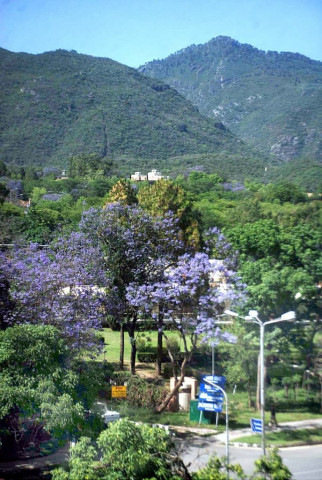EIA public hearing: Inclusion of park land in C-14 opposed
Wants design modified before granting NOC, also recommends other changes

The EPA suggested that proper measures must be put in place to ensure safety and to prevent fatal accidents. PHOTO: APP
A few months back, the civic body had sought a No Objection Certificate (NOC) from Pak-EPA for development of new residential sectors C-14, C-15 and C-16.
The CDA had submitted an Environmental Impact Assessment (EIA) to the Pak-EPA in which detailed information was provided about existing environmental conditions, impact of the project, and suggested mitigation measures during execution of the proposed work.
Before granting an NOC to the civic body, the Pak-EPA on Thursday held a public hearing at its office to incorporate public views and opinions.
Pak-EPA Director General Irfan Tariq emphasised during the public hearing that the CDA must exclude MHNP land from in Sector C-14 before moving forward. He also asked the CDA officials to give timeline for the establishment of sewerage treatment plants (STP), and a proper resettlement plan for the local population and any livestock, besides submitting a comprehensive plan regarding ground water recharge in the proposed sectors.
During the EIA report presentation by a CDA consultant, it was said that more than 600 kanals of MHNP would fall within C-14, where a 26-foot-wide road would be constructed with 150 feet right-of-way on both sides, in line with the Islamabad Master Plan.
The problem is that the Islamabad Master Plan was approved in 1960, while MHNP became a national park in 1979. No construction is allowed in national parks.
The consultant said more than 9,000 locals would be resettled during the development of the three sectors, and that they would be compensated in line with the land sharing formula on the basis of awards announced in 2008. The awards would give land owners developed residential plots equivalent to one quarter of the land taken from them.
The CDA, however, has not been able to convince the environmental watchdog that the plan provides for feasible resettlement of local farmers and livestock. Similarly, the CDA has said that the Indus River System Authority (IRSA) would provide water for these sectors, but the civic agency’s plan did not satisfy the EPA.
The EPA chief directed the civic body to provide a more robust and clear plan for ground water recharge in the area as well as a clear-cut schedule for development of STPs.
The CDA submitted that existing graveyards, religious sites, and natural waterways would be incorporated in the plan where the waterways are not in deep depressions, while 300 of feet green area would remain parallel to existing railway lines.
EPA officials stressed that the authority must avoid changing the natural course of waterways, whereas the environmental watchdog remains unsatisfied with the CDA’s strategy regarding railway lines, as they cross urban thoroughfares and also go through residential neighbourhoods.
The EPA suggested that proper measures must be put in place to ensure safety and to prevent fatal accidents. The EPA also suggested the installation of noise reduction structures along railway lines should be included in the development plan.
Published in The Express Tribune, August 5th, 2016.



















COMMENTS
Comments are moderated and generally will be posted if they are on-topic and not abusive.
For more information, please see our Comments FAQ